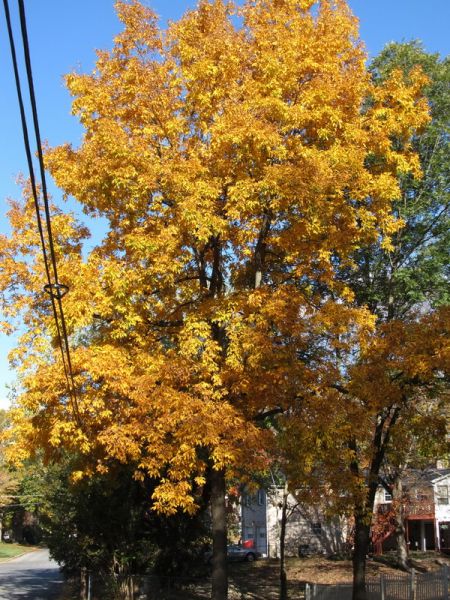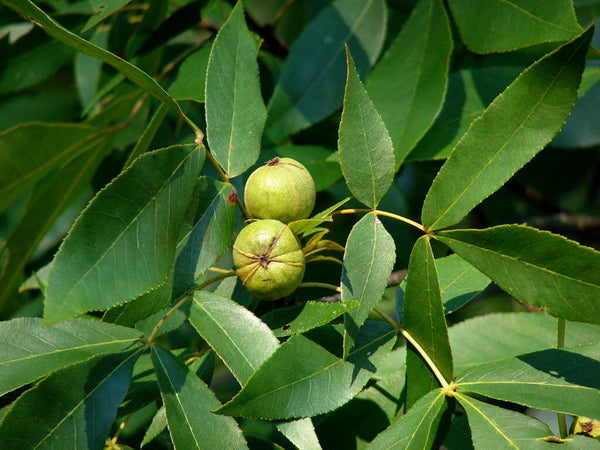Pignut hickory, Carya glabra
Shipping calculated at checkout
30 in stock
Need more? Contact us
Carya glabra, the pignut hickory, is a common, but not abundant species of hickory in the oak-hickory forest association in the Eastern United States and Canada. Other common names are pignut, sweet pignut, coast pignut hickory, smoothbark hickory, swamp hickory, and broom hickory. The pear-shaped nut ripens in September and October and is an important part of the diet of many wild animals. The wood is used for a variety of products, including fuel for home heating. This tree reach 15 to 24 m or 60-80 feet tall, consisting of a long straight trunk, ascending to spreading branches, and an oblongoid crown. Trunk bark is gray to gray-brown and somewhat rough, consisting of elongated ridges with flattened tops and shallow furrows. The bark of branches is more smooth and gray, while young twigs are brown and glabrous. Smaller branches and twigs are often crooked.
Alternate compound leaves about 8-12" long develop along the twigs; they are odd-pinnate with 5 leaflets, and rarely with 7 leafletsPignut Hickory is monoecious with male (staminate) and female (pistillate) florets on the same tree. The female florets develop at the tips of young shoots in short spikes of 2-5. Each female floret is very small (1/8" long or less) and inconspicuous, consisting of a green pistil and a few lanceolate bracts. Numerous male florets develop on drooping catkins about 2-4" long; the catkins are greenish yellow and narrowly cylindrical in shape. The catkins are arranged in bunches of 3 from short spurs near the tips of young twigs. Each male floret is very small (1/8" long or less), consisting of a calyx with several stamens that is partially covered by a bract with 3 lobes. The blooming period occurs from mid- to late spring for about 2 weeks. The florets are wind-pollinated. During the summer, fertile female florets develop into fruits (nuts with thin husks). Individual fruits are about 1" long and ¾" across and globoid-ovoid in shape. The husks are smooth and hairless across the surface; they are initially green, but later turn brown. At maturity, each husk partially divides into 4 segments to release its nut. The tan shell of the nut is ovoid and slightly flattened in shape; the meat of the nut varies from bitter to sweet. The root system has a long taproot and less well-developed lateral roots. This tree prefers full or partial sunlight and mesic to dry conditions. It adapts to various kinds of soil, including those containing loam, clay-loam, sandy loam, or rocky material.
Hardiness Zones
Specific port
Growth speed
Flowering period
Number of years for production
16 à 20 ans



